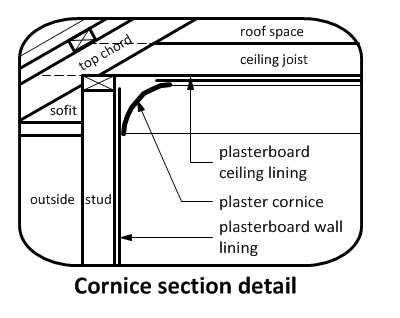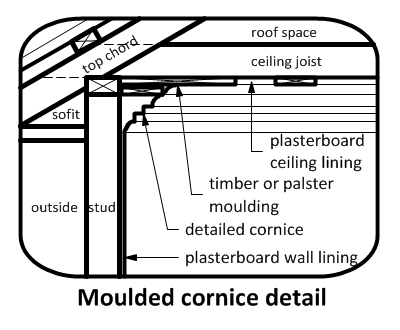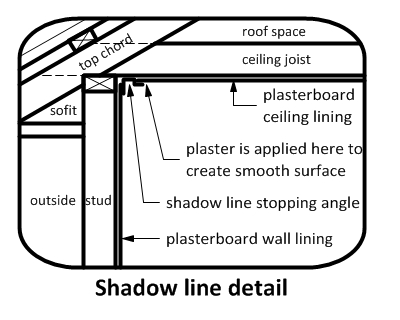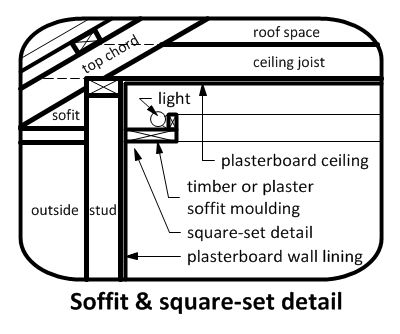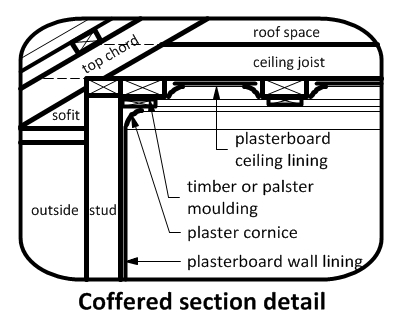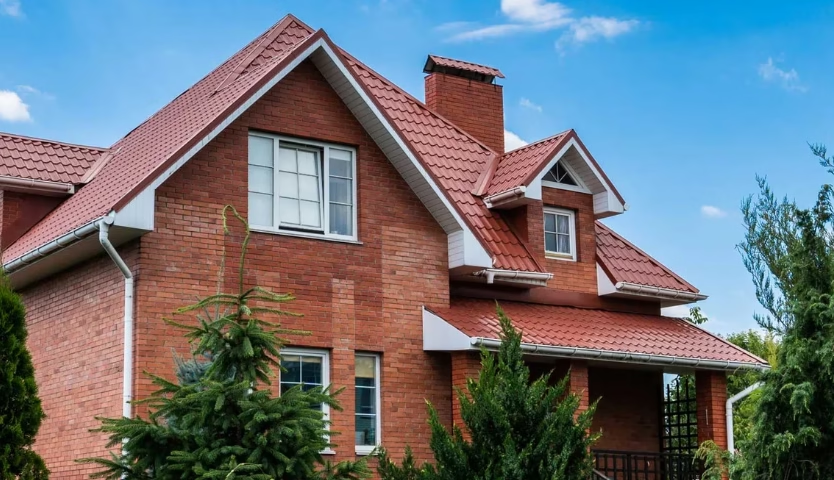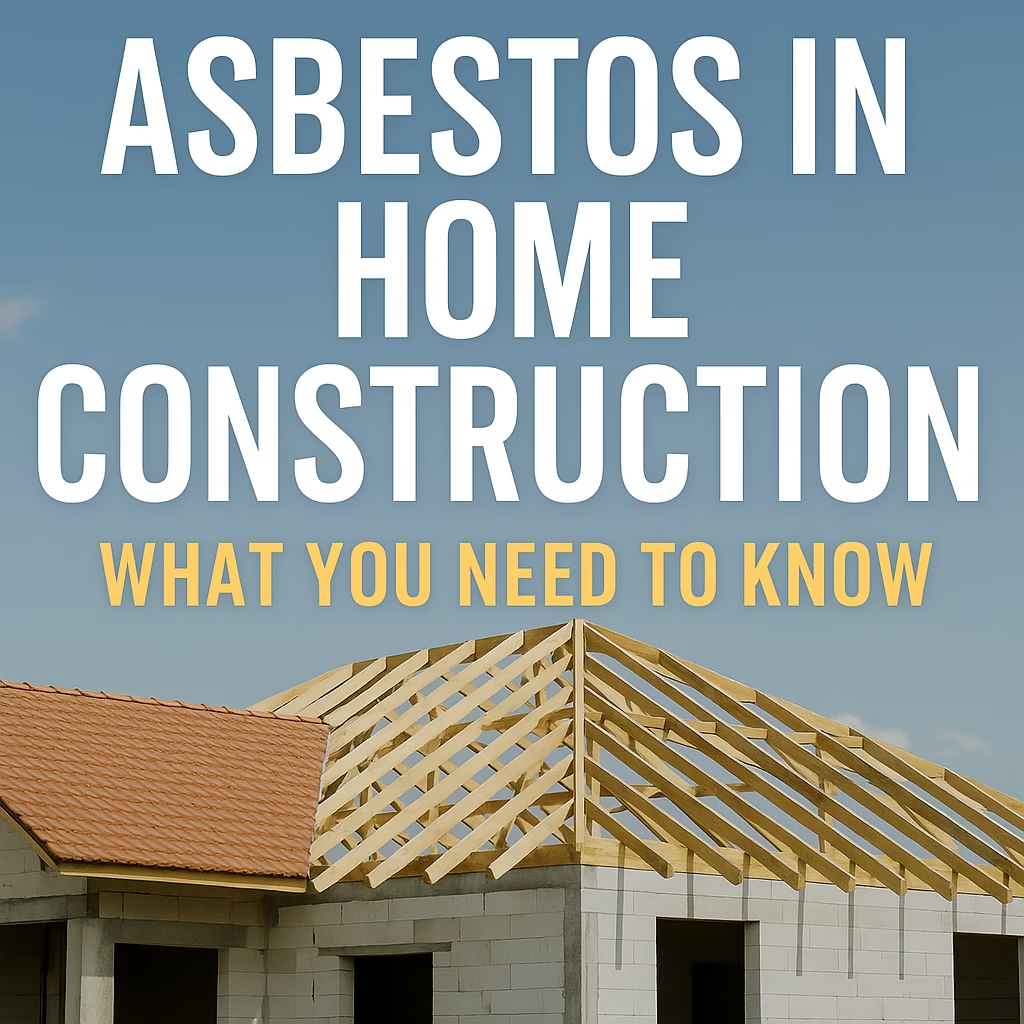Cornices, shadow line & alternatives
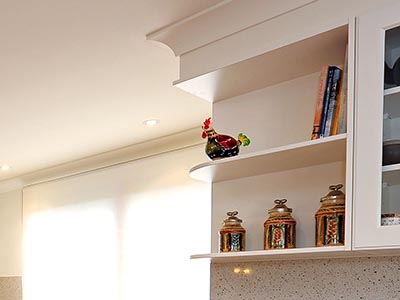 Example of a simple cornice
Example of a simple cornice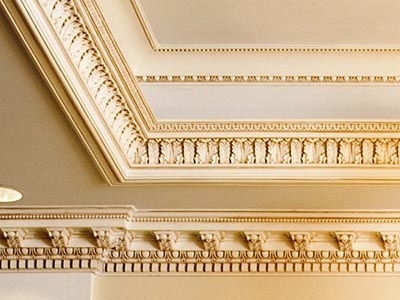 Moulded and detailed cornices.
Moulded and detailed cornices.
Picture courtesy of Sydney Metro Plastering
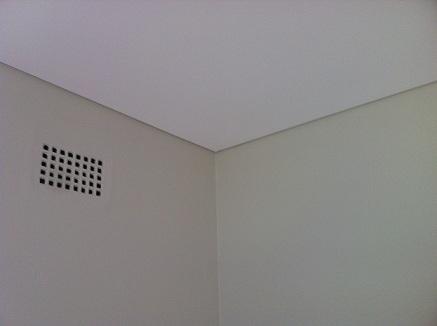 Shadow line example.
Shadow line example.
Picture courtesy of Sydney Metro Plastering
The cornice area is where walls and ceilings join. This area can be detailed in many different ways usually depending on the style and budget of your build.
The most common type of ceiling and wall join application is called cornicing but there are other options on the market such as shadow line, moulded cornicing, square set, coffered and soffit.
Cornicing is easy to install. It just needs to be cut to length with a craft knife and glued into place with plasterers glue. Plasterers find working with this product simple as wall and ceiling sheets can be cut quick and roughly as plasterers know the joins will be covered with the cornice.
Cornicing
Plain plasterboard cornicing is generally the most cost effective wall to ceiling join detail on the market. This is due to it’s cheap installation, ease of application and it’s solid acceptance in the Australian construction industry.
Plain plasterboard cornicing is easy to install. It just needs to be cut to length with a craft knife or saw and glued into place with plasterers glue and maybe a few nails. Plasterers find working with this product simple as wall and ceiling sheets can be cut quick and roughly (as plasterers know the joins will be covered with the cornice). The cornice is then briefly plastered at the joins and sanded ready to a ‘standard level’ finish ready for painting. See more about ‘level’ of finishes further on.
Plain plasterboard cornicing is easy to install. It just needs to be cut to length with a craft knife or saw and glued into place with plasterers glue and maybe a few nails. Plasterers find working with this product simple as wall and ceiling sheets can be cut quick and roughly (as plasterers know the joins will be covered with the cornice). The cornice is then briefly plastered at the joins and sanded ready to a ‘standard level’ finish ready for painting. See more about ‘level’ of finishes further on.
Click here to see a great guide on how to cut your cornicing.
Shadow line
Shadow line can be an expensive type of join. The wall and ceiling sheets need to be cut correctly and neatly as there will be no material to cover rough edges. Wall and ceiling sheets are installed first then a shadow line “stopping angle” is lodge and nailed into place. The corner then needs to be plastered where the angle meets the plasterboard on the ceiling and wall. It is then sanded to a ‘high level’ finish ready for painting. Shadow line joins are perfect for very modern homes and provides a minimalistic, non-fussy finish.
Moulded cornicing
Moulded cornicing is perfect for traditional styled homes like Federation and Victorian homes for example. They provide lots of detail and interest to the wall & ceiling join area but they are time intensive to install – costing more than a simple plasterboard cornice. The second image from the top of this article is a good example of this type of cornice.
Moulded cornicing can be detailed and constructed in two different ways:
 Square-set cornices
Square-set cornices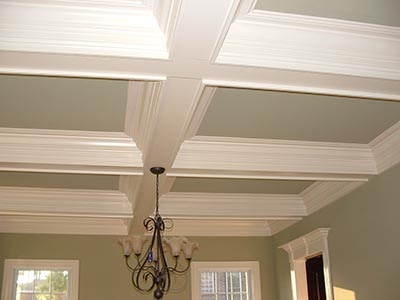 Coffered Ceiling
Coffered Ceiling
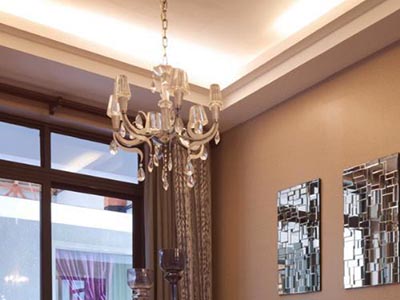 Soffit detailing example
Soffit detailing example
Courtesy of Nest Interior Design
- The mouldings can be uniquely drawn (member by member) and then installed (member by member) by a professional or,
- Pre-designed detailed mouldings can be purchased from a specialist plaster moulding supplier. This option is more cost effective as there is less labour involved in design and installation. However if you choose a pre-made moulding you will be limited by the pre-made options.
Square-set
Square-set cornices are a very popular option in the higher end mass Australian housing market. This type of wall to ceiling join type is probably the most cost effective after plain plasterboard cornicing and suites modern style homes. Square set corners however also attract more spiders and are harder to keep clearer of cobwebs than simple plasterboard cornices.
Coffered
If you want to spend oodles of money on beautifully detailed cornice detailing go no further than Coffered detailing. While the picture included here is aesthetically spectacular the labour involved in installing this type of detail is significant. You can install pre-made Coffered detail but it looks nowhere near as good as the detail made from scratch. See pre-made Coffered mouldings here.
Soffit
Soffit detailing is a beautiful way to incorporate lighting and detail into are normally forgotten space. While more labour intensive to design and construct, if used sparingly in can really enhance the aesthetics and mood of an entry space or dining area for example. Usually soffit detailing is design by a building design or an architect, then installed by a builder. There are also a few pre-made options on the market, but again they just don’t compare aesthetically.
Materials
Plasterboard
Many cornicing products and mouldings are made from plasterboard. Plasterboard is a laminated sheet of cardboard with a core of gypsum plaster.
Moulded foam
One of the latest cornice and moulding materials is a foam composit product. These products are generally lighter than plasterboard products and are not susceptible to moisture and termite attack like plasterboard.
Detailed drawings
